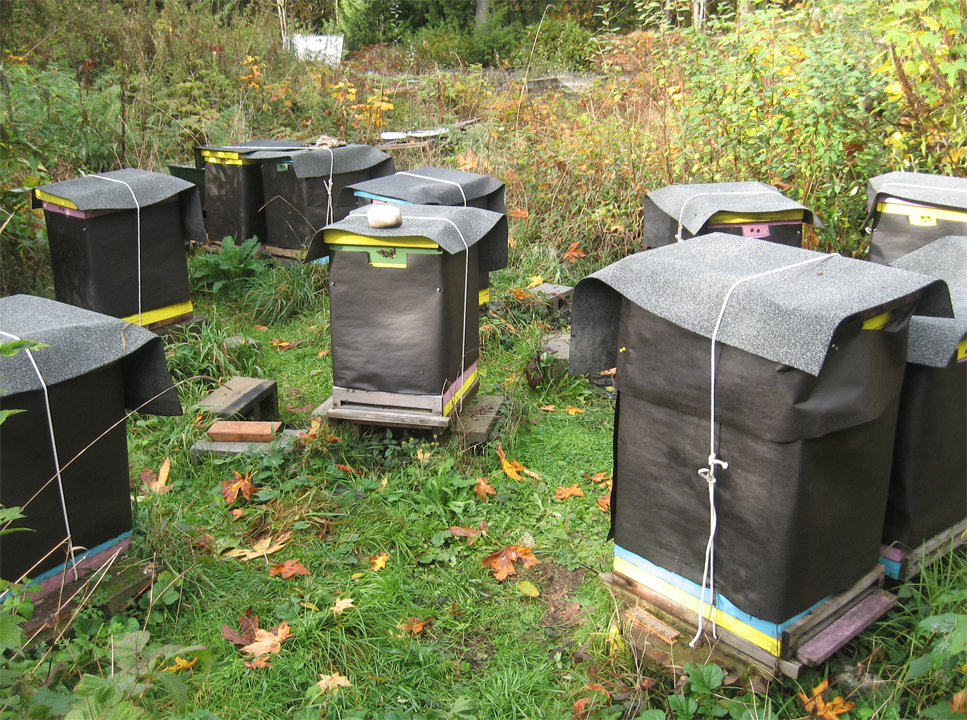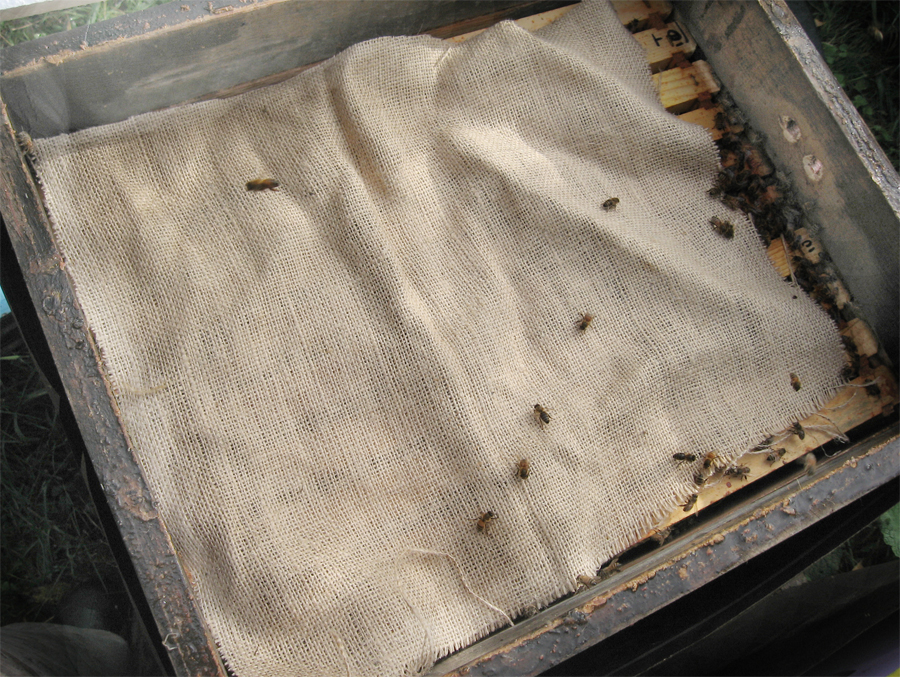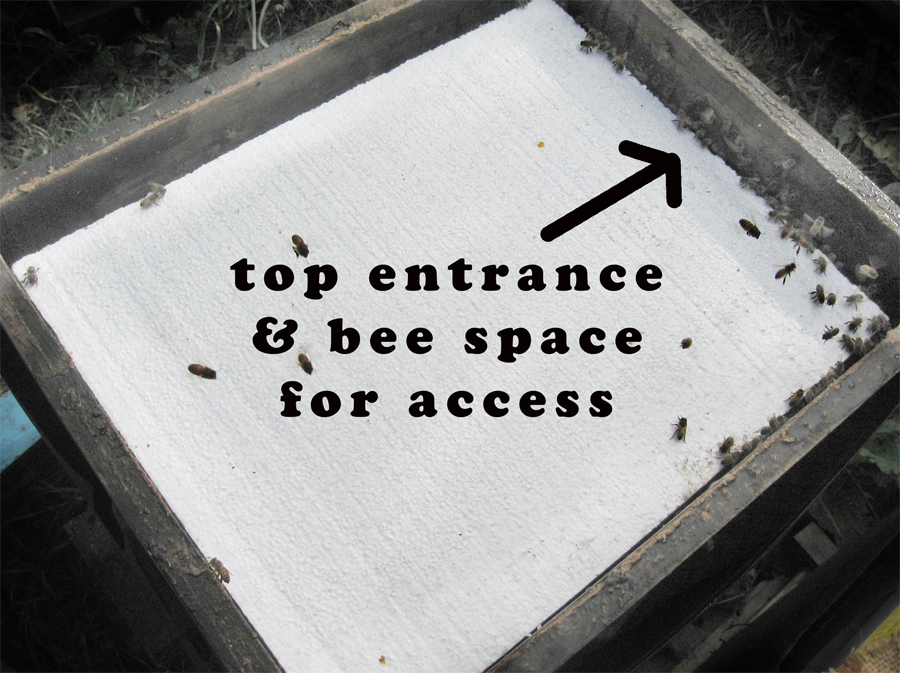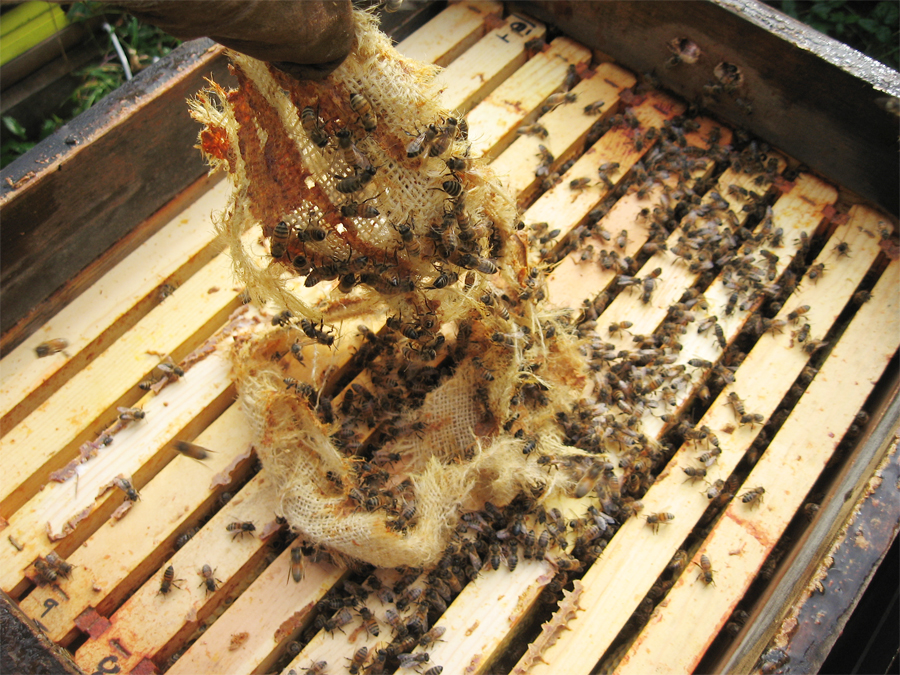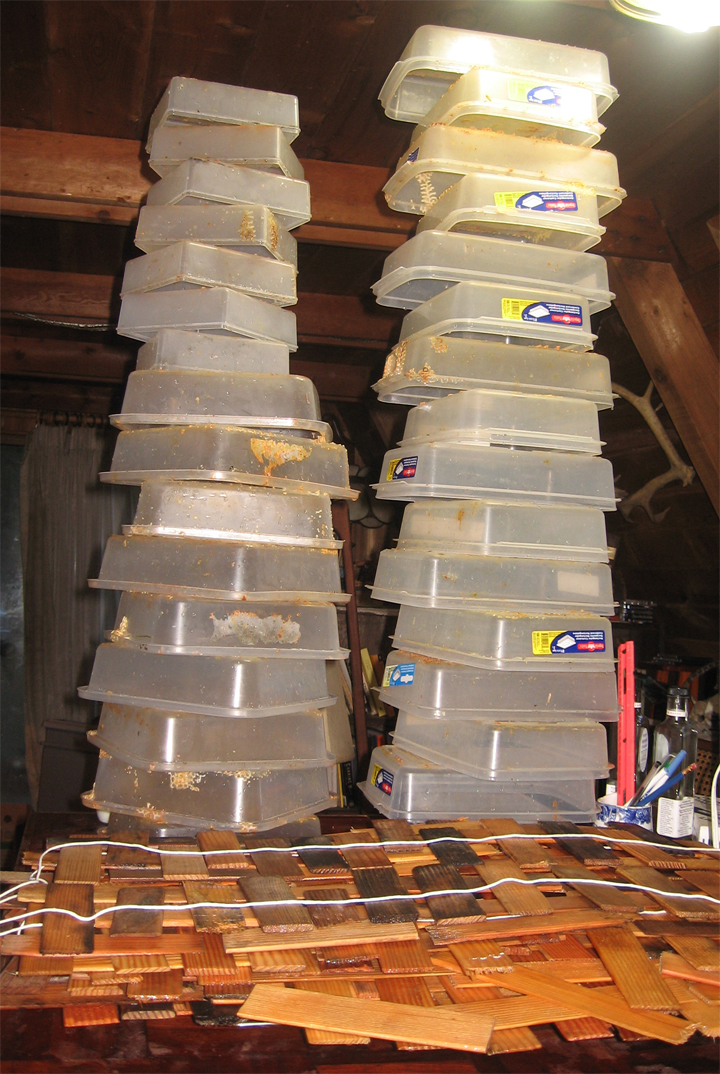It is now cold and wet in Maple Falls (northwest Washington state): and the hives at Brookfield Farm are shut for the winter. They are wrapped up in tarpaper.
Each has roofing asphalt “hat” in place and tied down. The feeders have been removed from the top bars. In their place, a piece of burlap has been placed over the top bars, and a piece of insulation has been laid on top of that.
Does the insulation help keep the hives warm? I think so, but I’ve no proof. Years ago I read about someone doing this in a Bee Culture magazine article, and it sounded like a good idea.
I use what I call “bead board” insulation: the white stuff that breaks easily if you score it. The insulation does not fit tight. There’s about ¼ to ½ inch space at the front of the hive. This leaves space for the bees to reach their upper entrance. On each side, there’s usually about 1/8 inch space on each side. The insulation is a bit thinner than the “collar” which holds the insulation (and feeders in the spring & fall), leaving a gap between the top of the insulation and the hive cover. The gaps provide ventilation, but they also mean that the hive top is not fully insulated. Airflow is better than warmth. Cold doesn’t kill bees; wet kills bees.
So why do it? I worry about the bees, and I figure it doesn’t hurt them.
The burlap below the bead board serves two purposes. It separates the bees from the insulation, and it breathes. This seems to allow the water generated by the bees’ metabolisms to pass into the insulation area and not collect over the bees’ cluster. The airflow in the hive as well as around and above the insulation keeps the hives pretty dry even in the wettest winter. What water does collect on the underside of the hive cover never reaches the bees, as it would have to pass through both the insulation and the burlap.
Usually the burlap I use is the same burlap that was in the hives all summer. In the summer the burlap keeps the bees from building wax in the “collar” that sits on top of the top box. The “collar” has the upper entrance, and is part of the ventilation system. However, some hives have reworked their burlap
by fall and require a new piece.
If one wanted to avoid all this, one solution is to either have the bee hives set where they have a good wind break in the winter, so driving rains wouldn’t penetrate the hives, or move them so such a location in the fall. Sheltered locations in my area would not work for the hives in the spring and summer, and I don’t have the equipment to move hives twice a year. So my bees get wrapped and lightly insulated. Seems to work for me.
Oh, what happens to the feeders? They get cleaned. Here’s a few of them:

